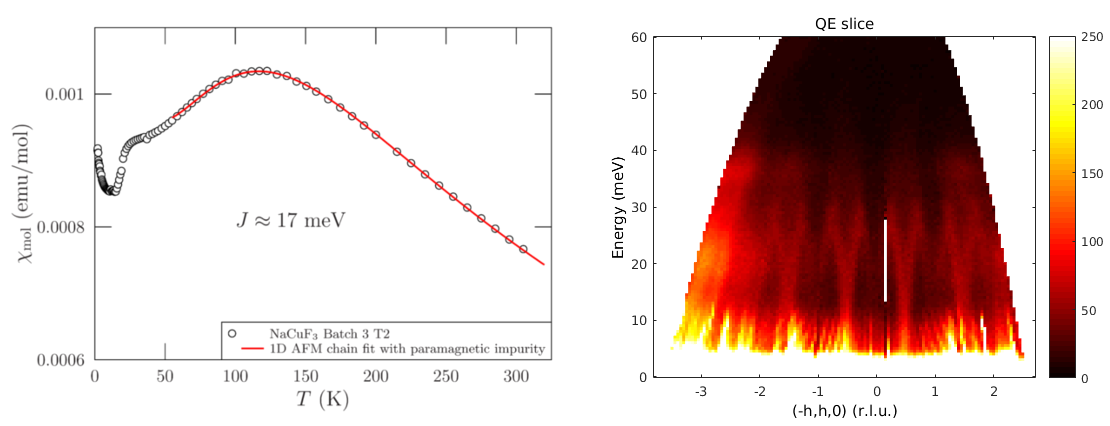An experimental approach to solve the single-band Hubbard model in new fluorides
A strongly correlated electron system may be described by the single-band Hubbard model[1]. Despite the simple form, the richness of the Hubbard model's phase diagram has attracted much current research interests. In this project, experimental work on a physical realization of the Hubbard model NaCuF3 has been carried out inspired by recent theoretical calculation[2], aiming to solve the Hubbard model with a more practical approach. Large quantities of NaCuF3 single crystals have been successfully synthesized using solid state chemistry methods. The samples were characterized by means of x-ray powder diffraction and magnetic susceptibility measurements. This fluoride compound forms a low-dimensional quantum Heisenberg system with the superexchange pathway going through corner-sharing CuF6 octahedra. The excitation spectra revealed by recent inelastic neutron scattering experiment, has shown a two-spinon continuum at low temperature, characteristic of a well-isolated antiferromagnetic Heisenberg spin chain.

(Left) The magnetic susceptibility of NaCuF3. Red solid lines correspond to a linear antiferromagnetic chain fit above 50 K. The extracted intra-chain coupling J is 17 meV. A phase transition is also observed below 20 K. (Right) Extracted from the inelastic neutron scattering results, the neutron intensity is displayed as a function of momentum and energy along the spin chain (-110) direction. Two spinon continuum spectra was observed, characteristic of 1D antiferromagnetic chain.
[1] J. Hubbard, Proc. R. Soc. London, Ser. A 281, 401 (1964).
[2] S. M. Griffin, P. Staar, T. C. Schulthess, M. Troyer, N. A. Spaldin, Phys. Rev. B 93, 075115 (2015).